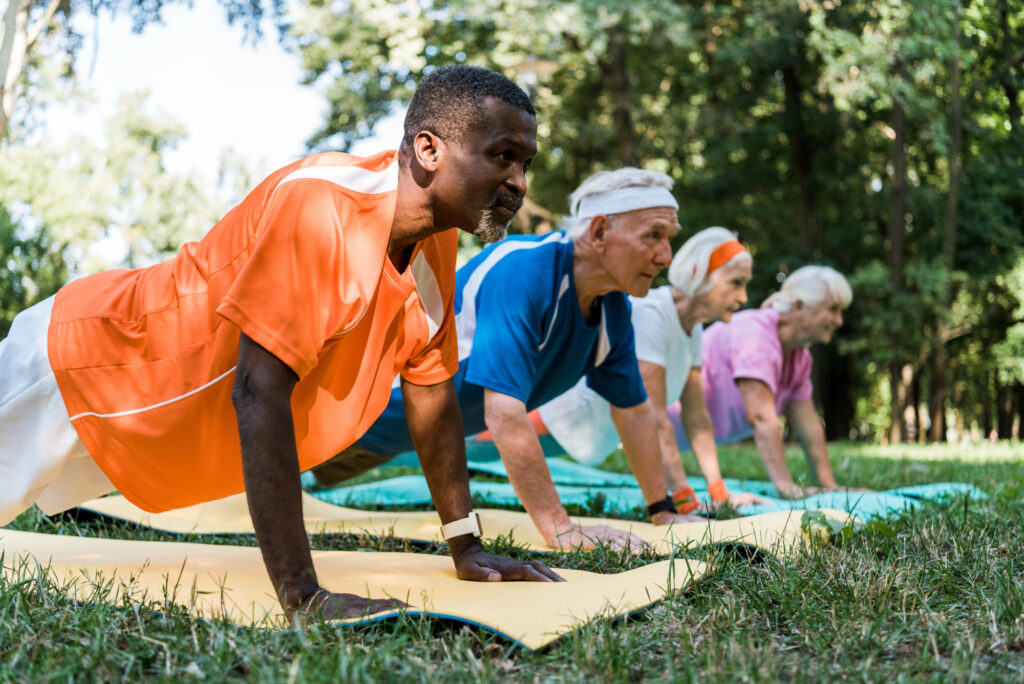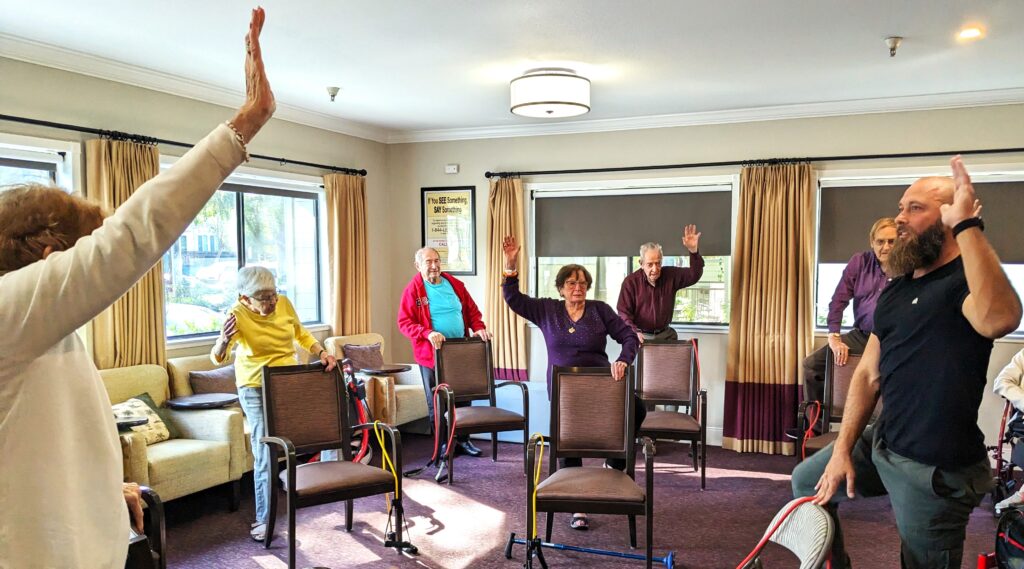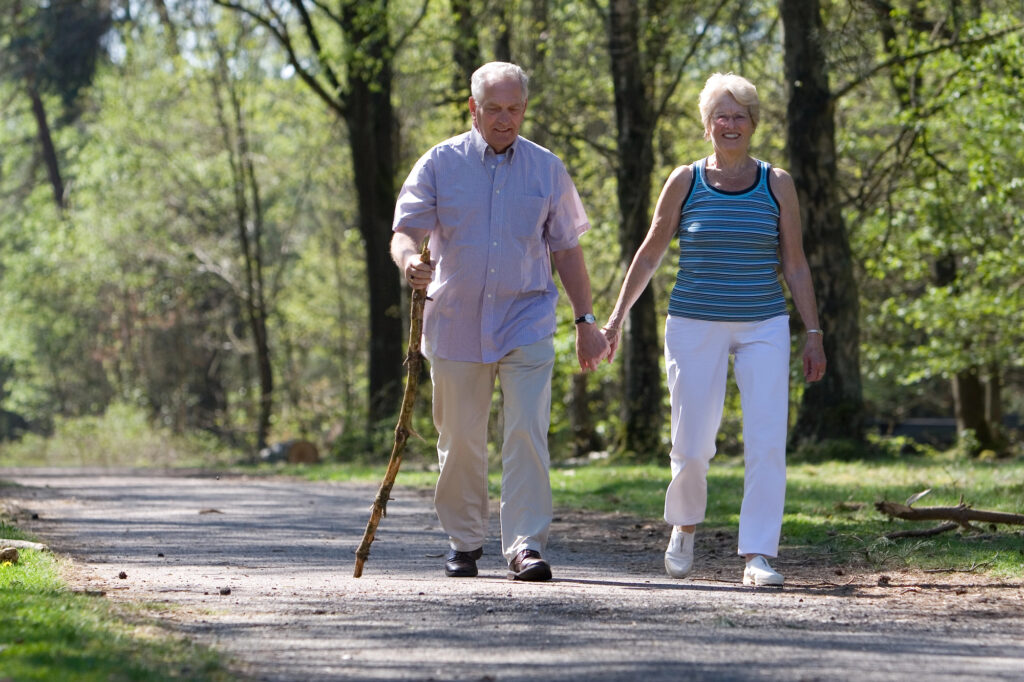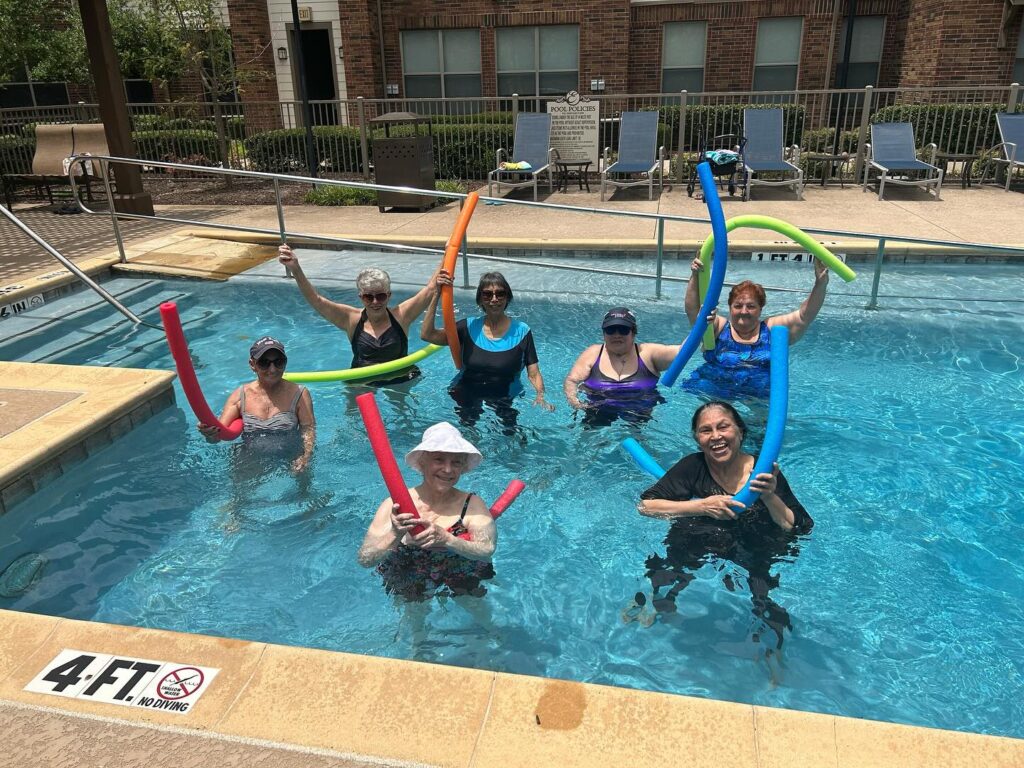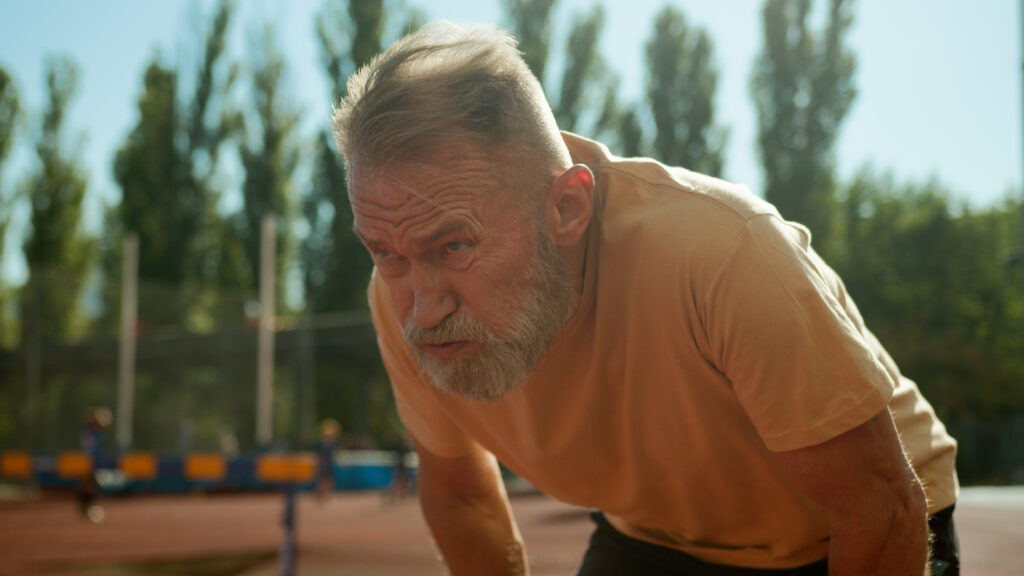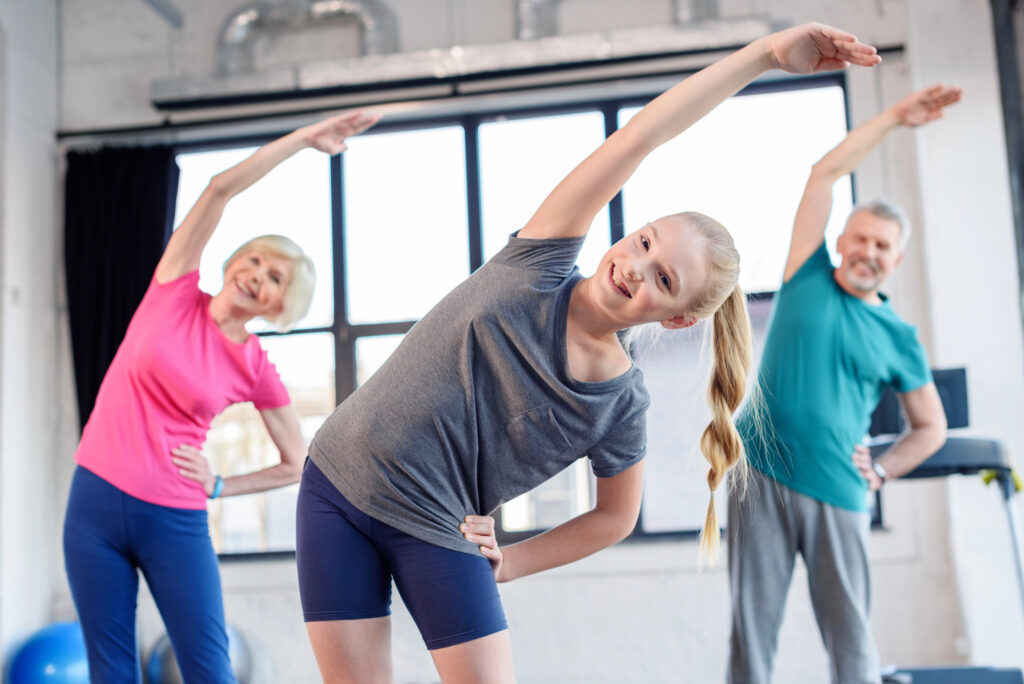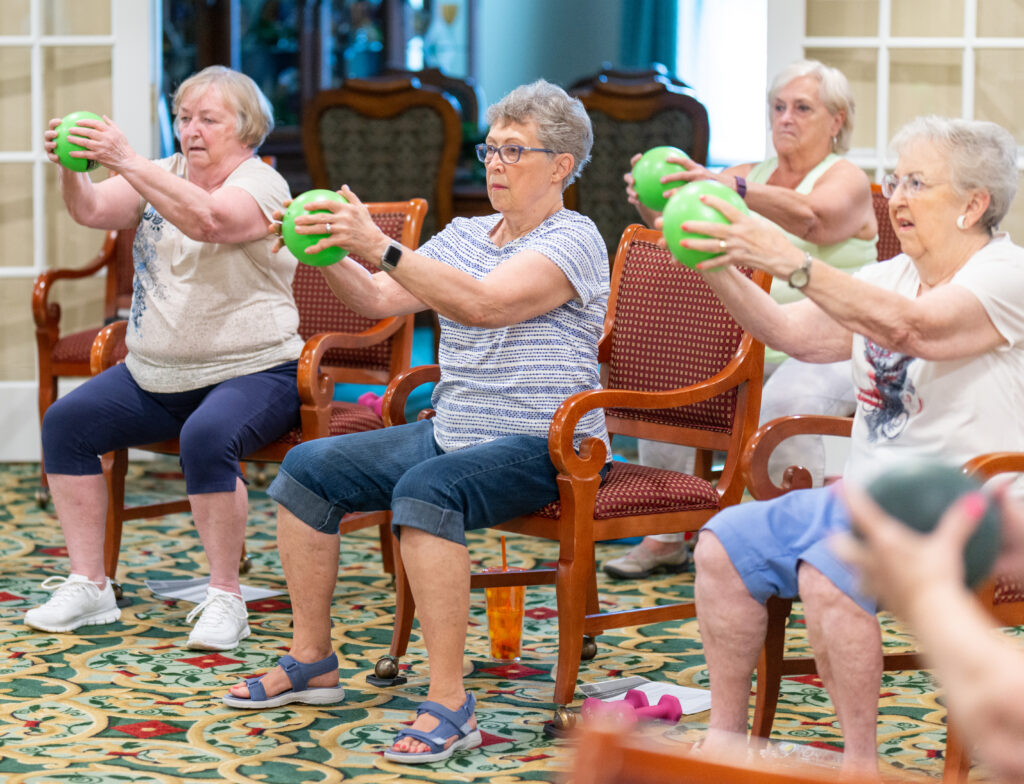Best Exercises for Seniors with Type 2 Diabetes
Are you a senior living with Type 2 diabetes, wondering how to stay active and maintain your health? Or a healthcare provider looking to improve the health outcomes and lives in your senior living community center?
As we age, staying physically active becomes increasingly important, especially for individuals managing chronic conditions like Type 2 diabetes. Physical activity not only aids in blood sugar control but also enhances overall well-being. However, with countless workouts and exercise programs out there, it can be challenging to identify which exercises are both safe and effective for seniors.
Finding the right exercises doesn’t just contribute to lower blood sugar levels; it can also improve mobility, boost energy, and enhance quality of life. Yet, it’s crucial to choose exercises that align with your unique health circumstances.
So, today, we will explore the best exercises tailored for older people with Type 2 diabetes, empowering them and caregivers to embrace an active lifestyle and manage their condition with confidence. Let’s discover how you can safely integrate movement into your daily routine!
How Often Should Seniors with Type 2 Diabetes Exercise?
Type 2 diabetes is a chronic condition that falls under the category of diabetes mellitus, characterized by insulin resistance and impaired insulin secretion.
This results in elevated blood sugar levels, which can lead to various health complications if not managed properly. Unlike Type 1 diabetes, where the body produces little to no insulin, individuals with Type 2 diabetes may still produce insulin but are unable to use it effectively.
This is where regular exercise, several minutes per week, comes into play, as strength and aerobic activities can improve health conditions in several ways for patients with type 2 diabetes. It can improve insulin sensitivity and glucose regulation and aids in maintaining ideal body weight.
Additionally, determining the ideal frequency of exercise for elderly people with Type 2 diabetes is critical for maximizing health benefits while ensuring safety.
Experts, like those at the American Diabetes Association, generally recommend that adults with this condition engage in physical activity most days of the week. Specifically, aiming for at least 150 minutes of moderate-intensity exercise per week can greatly enhance glycemic control and overall health.
This can be broken down into 30-minute sessions, five days a week, which integrate seamlessly into daily routines, ensuring a sustainable lifestyle change.
For senior living communities, facilitating such a regimen not only supports improved health outcomes but also fosters a community atmosphere of wellness and active living, considerably enhancing the quality of life for residents.
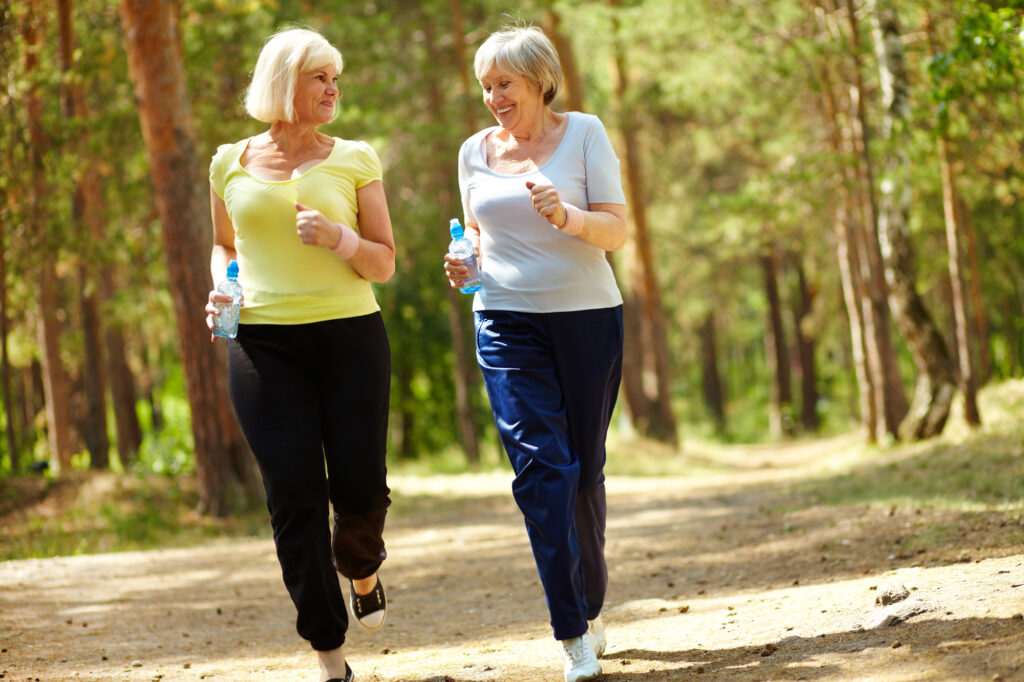
Best Exercises to Manage Diabetes in Seniors
As we’ve already established, exercise programs can be a powerful tool for elderly adults with type 2 diabetes because they help control blood sugar, improve insulin sensitivity, and promote cardiovascular health.
Here are some of the best types of exercise for seniors with diabetes:
Water Aerobic Exercises or Swimming
Among the most beneficial activities for managing diabetes in seniors, water aerobic training or swimming stand out due to their low-impact nature and high efficacy.
These exercises considerably reduce joint pain and stress while enhancing cardiovascular health, which is essential for managing diabetes or lowering diabetes risks. The buoyancy of water supports the body, allowing for a greater range of motion and reducing the risk of injury. This aspect is particularly beneficial for those with mobility issues.
Regular aquatic aerobic training can improve insulin sensitivity, a vital factor in diabetes control. Additionally, the rhythmic nature of swimming and water aerobics mirrors the benefits of brisk walking by boosting circulation and promoting weight management.
These are just some of the reasons why aquatic exercises are a staple of many senior living community programs.
Chair Exercises
Chair exercises are an excellent option for seniors with diabetes who may have limited mobility or balance concerns. Integrating this type of moderate exercise into the daily routine can be a significant factor in managing diabetes effectively.
According to the American Diabetes Association, maintaining regular physical activity is essential for blood sugar control, which is particularly important in the senior population. Chair exercises offer a way for even seniors with limited mobility to get a few minutes of exercise a day. These exercises can be tailored to individual needs and abilities, ensuring all participants gain the benefits without the risk of strain or injury.
Common routines include seated marches, leg lifts, and arm circles, which help enhance circulation and muscle activity. Encouraging these activities in a community setting supports overall health and camaraderie among residents, fostering a proactive approach to diabetes management.
Resistance Band Workouts
Resistance band workouts are particularly beneficial for senior patients with type 2 diabetes, offering a safe and effective way to build strength and improve overall health. Resistance bands are portable, affordable, and can be used to target all major muscle groups with minimal risk of injury.
Resistance bands create tension, requiring the muscles to work harder as they push or pull against the resistance. For seniors with diabetes, weight loss and maintaining or increasing muscle mass are important because muscles use glucose for energy, which helps to naturally lower blood sugar levels. By improving muscle strength and endurance, seniors are better able to perform daily activities, which promotes independence and encourages a more active lifestyle.
Additionally, many seniors may have joint issues, such as arthritis, which can make high-impact exercises painful or impractical. Resistance bands provide a joint-friendly alternative, as exercises can be performed in a controlled manner and adapted to different ability levels.
It’s adaptable, too; it can be a high-intensity exercise for those seniors who can manage stronger or shorter bands or a lighter and moderate-intensity exercise for those who require it.
Dancing
Dancing emerges as an exceptionally beneficial exercise for seniors with Type 2 diabetes or those at risk of diabetes, offering a unique combination of physical activity and social interaction.
This dynamic form of exercise not only aids in maintaining a healthy weight and cardiovascular risk factors but also enhances flexibility and balance, reducing the risk of falls.
For seniors in your care, integrating dance sessions can greatly boost their emotional well-being, countering feelings of isolation by fostering a sense of community and belonging.
Encouraging participation in dance activities, whether through organized classes or informal gatherings, can be a delightful and effective way to manage diabetes symptoms and improve overall health.
As caregivers, promoting these joyous physical activities can make a critical difference in their quality of life.
Walking
Walking is a gentle yet beneficial activity that supports glucose control by enhancing muscle uptake, which helps lower blood sugar levels. Walking is particularly advantageous for seniors as it can be easily tailored to fit individual fitness levels and does not require special equipment.
Encouraging regular walking sessions in senior living communities can foster a sense of community, improved health outcomes, and collective wellness while simultaneously addressing the physical health needs of residents.
Muscle Strength Training
Muscle strength training is essential for seniors with Type 2 diabetes, as it not only enhances muscle mass but also improves the body’s ability to regulate blood sugar.
Incorporating resistance exercises such as leg presses, chest presses, and seated rowing within senior living communities can greatly benefit residents. These activities boost insulin sensitivity, aiding in better glucose management, and also contribute to a reduction in body fat, which is vital for managing diabetes.
Implementing a structured muscle-strengthening program tailored to individual capabilities and safety encourages seniors to maintain a physically active lifestyle while fostering a sense of community and support.
Half-Wall Squat
The half-wall squat not only aids in building lower body strength but also helps in enhancing blood glucose control.
By leaning against a wall and slowly lowering the body into a squat position until the thighs are parallel to the ground, seniors can maintain a safe posture.
The support from the wall helps in balancing, making it ideal for those with limited mobility or balance issues.
Regular practice of the half-wall squat can greatly improve the muscular health and overall stamina of seniors.
Light Weights
Don’t forget to contemplate the role of lightweight training in diabetes management for seniors.
Incorporating light weights into the exercise routines of seniors can greatly contribute to improving muscle strength and overall metabolic health. This form of resistance training stimulates muscle growth, which is essential because muscle tissue plays a key role in glucose metabolism.
Yoga or Chair Yoga
Flexibility and balance are fundamental elements in managing diabetes, and yoga, including its adapted form, chair yoga, provides these benefits specifically tailored for seniors.
These gentle forms of exercise not only enhance physical flexibility and balance but also contribute to stress reduction and better mental health, which are essential in regulating blood glucose levels.
Chair yoga, in particular, is ideal for seniors with limited mobility, allowing them to perform exercises safely from a seated position.
Implementing these yoga practices in senior living communities can greatly aid in the daily management of diabetes, improving residents’ quality of life.
Encouraging regular sessions can foster a supportive environment where seniors feel empowered in their journey toward wellness.
Tai Chi or Balance Exercises
Incorporating Tai Chi or other balance exercises into the routines of seniors can greatly enhance their ability to manage Type 2 diabetes.
These gentle forms of resistance exercise improve physical stability, reduce fall risk, and stimulate mental serenity, contributing to overall well-being.
Specifically, Tai Chi aids in glycemic control (moderating blood glucose levels) through its meditative slow movements, which enhance circulation and calm the nervous system.
This is particularly beneficial for seniors, as it addresses both the physical and psychological aspects of diabetes management.
Pilates
Building on the foundation of balance and mental serenity provided by Tai Chi, Pilates emerges as another essential exercise regimen that supports diabetes management in seniors.
This type of exercise focuses on core strength, flexibility, and overall body awareness, which are important for the elderly as these elements greatly aid in the control of blood sugar levels.
By enhancing muscle mass, Pilates can reduce insulin resistance, a critical factor in managing Type 2 diabetes.
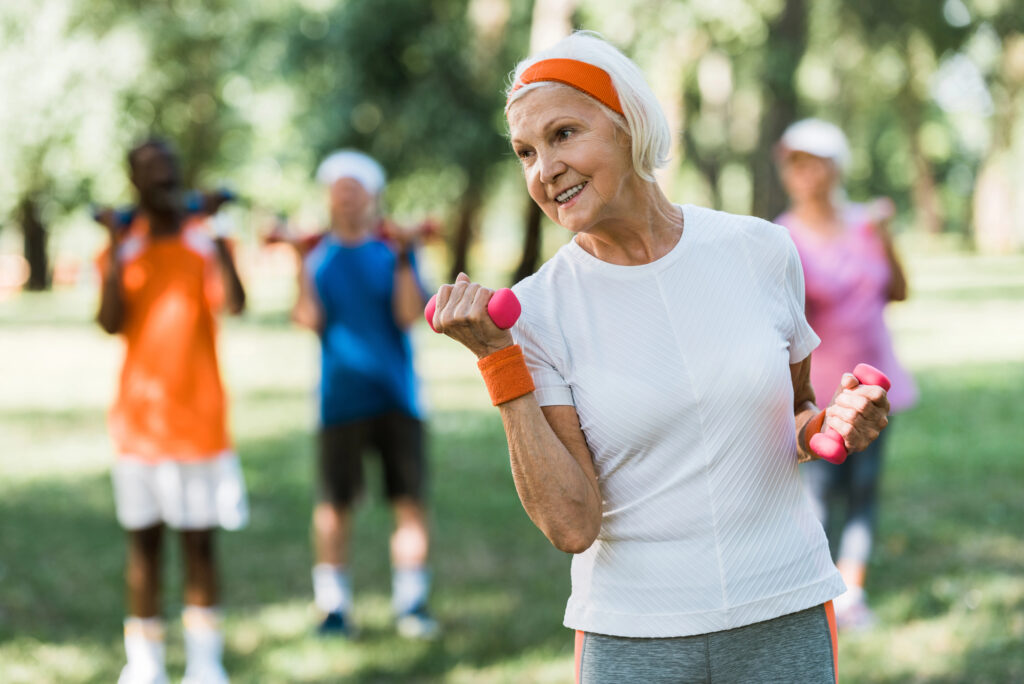
Additional Tips for Helping Seniors with Their Diabetes
Implementing exercise routines and programs for seniors has tremendous benefits for any senior living community. Still, it’s worth emphasizing that caring for seniors with any type of diabetes or insulin resistance takes more than just making them work out or do some light walking several times per week.
Here are some additional considerations to remember when it comes to seniors who have diabetes.
Regularly Check Blood Sugar
While exercise plays a critical role in managing Type 2 diabetes among seniors, regular monitoring of blood sugar levels is equally essential. Glycemic control (checking blood sugar levels) allows caregivers to assess how well current management strategies are working and to make necessary adjustments promptly. In fact, these protocols aren’t limited to seniors with diabetes but to people with prediabetes or with certain risk factors.
It guarantees that physical activity levels can be tailored to each individual’s unique health requirements and body composition, optimizing both safety and effectiveness. Regular testing also helps prevent the complications associated with diabetes by identifying any sudden changes in blood sugar levels, which can be particularly dangerous for the elderly.
Encouraging and assisting seniors with consistent blood glucose monitoring can empower them, enhancing their ability to manage their condition effectively and maintain their overall health and well-being.
Keep Them Consistent
Consistency is paramount when implementing exercise routines for seniors with Type 2 diabetes. To foster a steady and beneficial exercise regimen, it is helpful to establish a structured schedule that aligns with each senior’s individual health profile and abilities.
Encourage participation by setting achievable goals and celebrating milestones, which can considerably enhance motivation. Additionally, integrating these activities into daily routines can help normalize them, making exercise less intimidating and more of a regular part of life.
Caregivers should also be trained to provide gentle reminders and support, guaranteeing that seniors feel confident and supported in their efforts.
Regular monitoring and adjustments by healthcare providers will make sure that the exercise plan remains appropriate and effective for each senior’s evolving health needs.
Hydration is Key
Proper hydration is essential for seniors managing Type 2 diabetes, as it enhances metabolic function and aids in the regulation of blood sugar levels. Dehydration can negatively affect blood sugar control by causing blood glucose to concentrate and rise.
Encouraging seniors to drink sufficient water throughout the day is important, particularly before, during, and after physical activities. Caregivers should provide easy access to water and remind seniors to drink regularly. Non-caffeinated, sugar-free beverages are also good options.
Monitoring signs of dehydration, such as dry mouth, fatigue, or dizziness, is critical.
Listen to What Their Bodies Tell Them
Understanding the signals a senior’s body sends is essential in managing diabetes effectively. Caregivers should prioritize fostering an environment where seniors and patients with type 2 diabetes feel comfortable reporting sensations like fatigue, dizziness, or pain during both exercise and their daily life.
This feedback is invaluable for adapting fitness programs to individual needs, ensuring safety, and enhancing the effectiveness of physical activity fo glycemic control. Encourage regular dialogue about how they feel before, during, and after exercises.
This practice not only helps in tailoring exercise routines and physical activity levels but also empowers seniors by involving them in their health management decisions.
Live 2 B Healthy Brings Senior Exercises to Fight Type 2 Diabetes to Your Living Community
Live 2 B Healthy offers a tailored exercise program specifically for seniors, directly addressing the unique needs of residents in senior living communities.
By integrating customized fitness routines, this program not only helps in managing blood sugar levels but also enhances overall physical health and well-being by rescuing seniors from sedentary behavior in their daily lives.
The regimen includes strength training, flexibility exercises, and endurance-building activities, all essential for aging bodies.
Importantly, these exercises are led by healthcare providers and professional trainers who specialize in senior fitness, ensuring safety and effectiveness.
Implementing such a program in your community can greatly uplift the quality of life for your residents, providing a proactive approach to diabetes management and fostering a supportive environment for health improvement.
Conclusion
To sum up, regular sessions of physical activity per week are essential in mitigating the risk of Type 2 diabetes among seniors. It enhances insulin sensitivity, facilitates glucose metabolism, and aids in maintaining ideal body weight.
Additionally, exercise offers heart health benefits and promotes psychological well-being, further supporting the health and independence of older adults. Implementing structured exercise programs in senior living communities, such as those offered by Live 2 B Healthy, can be a pivotal strategy in the prevention and management of diabetes in this demographic.


